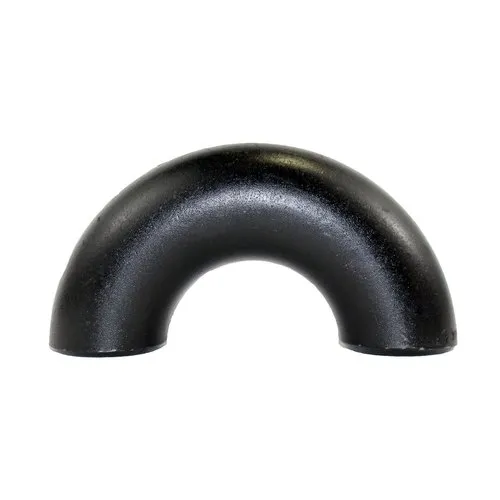-
Cangzhou Yulong Steel Co., Ltd.
-
Phone:
+86 13303177267 -
Email:
admin@ylsteelfittings.com
- English
- Arabic
- Italian
- Spanish
- Portuguese
- German
- kazakh
- Persian
- Greek
- French
- Russian
- Polish
- Thai
- Indonesian
- Vietnamese
- Zulu
- Korean
- Uzbek
- Hindi
- Serbian
- Malay
- Ukrainian
- Gujarati
- Haitian Creole
- hausa
- hawaiian
- Hebrew
- Miao
- Hungarian
- Icelandic
- igbo
- irish
- Japanese
- Javanese
- Kannada
- Khmer
- Rwandese
- Afrikaans
- Albanian
- Amharic
- Armenian
- Azerbaijani
- Basque
- Belarusian
- Bengali
- Bosnian
- Bulgarian
- Catalan
- Cebuano
- China
- China (Taiwan)
- Corsican
- Croatian
- Czech
- Danish
- Esperanto
- Estonian
- Finnish
- Frisian
- Galician
- Georgian
- Kurdish
- Kyrgyz
- Lao
- Latin
- Latvian
- Lithuanian
- Luxembourgish
- Macedonian
- Malgashi
- Malayalam
- Maltese
- Maori
- Marathi
- Mongolian
- Myanmar
- Nepali
- Norwegian
- Norwegian
- Occitan
- Pashto
- Dutch
- Punjabi
- Romanian
- Samoan
- Scottish Gaelic
- Sesotho
- Shona
- Sindhi
- Sinhala
- Slovak
- Slovenian
- Somali
- Sundanese
- Swahili
- Swedish
- Tagalog
- Tajik
- Tamil
- Tatar
- Telugu
- Turkish
- Turkmen
- Urdu
- Uighur
- Welsh
- Bantu
- Yiddish
- Yoruba

Oct . 16, 2024 23:21 Back to list
api 5l x60 pipe wall thickness
Understanding API 5L X60 Pipe Wall Thickness Key Considerations for Industry Applications
API 5L X60 is part of a standard established by the American Petroleum Institute that specifies the requirements for the manufacturing of line pipes used in the transportation of oil and natural gas. The significance of wall thickness in these pipes cannot be overstated, as it impacts performance, safety, and longevity. This article delves into the factors influencing the wall thickness of API 5L X60 pipes and their implications for industry applications.
The Importance of Wall Thickness
Wall thickness is one of the critical parameters that define the overall strength and reliability of pipelines. In the context of API 5L X60 pipes, which are made from carbon steel, the wall thickness is essential for withstanding internal pressures, external loads, and environmental conditions. Thicker walls generally offer greater resistance to pressure and are capable of enduring harsher conditions, making them preferable for high-stress applications.
API 5L X60 Specifications
According to the API specifications, the X60 designation refers to the minimum yield strength of the pipe. For X60, this yield strength is around 60,000 psi, which indicates its ability to handle significant stress during operation. The wall thickness for API 5L X60 pipes varies based on the pipe diameter and intended application, typically ranging from 0.187 inches to upwards of 0.438 inches for larger diameters. Variations in thickness can affect the pipe’s weight, cost, and installation process.
Key Considerations for Determining Wall Thickness
1. Operating Pressure One of the most critical factors influencing wall thickness is the operating pressure of the fluid being transported. Higher operating pressures necessitate thicker pipes to ensure they can safely contain the fluids without deformation or rupture.
api 5l x60 pipe wall thickness

2. Diameter of the Pipe The diameter also plays a crucial role in determining the appropriate wall thickness. Generally, as the diameter of the pipe increases, the wall thickness must be adjusted accordingly to maintain integrity and safety standards.
3. Corrosion Allowance Given that pipelines are often subjected to corrosive environments, industries usually incorporate a corrosion allowance in the wall thickness. This extra thickness compensates for material degradation over time, ensuring that the pipe remains functional throughout its service life.
4. Temperature and Environmental Conditions Temperature variations can affect the strength characteristics of the pipe material. In applications where high temperatures are expected, increased wall thickness may be required to ensure the material retains its integrity.
5. Regulatory Standards Compliance with industry standards and regulations will directly influence the selection of wall thickness. It is crucial for pipe manufacturers and users to adhere to the specifications outlined by relevant authorities to ensure safety and reliability.
Conclusion
In summary, the wall thickness of API 5L X60 pipes is a vital aspect of their design and application in the oil and gas industry. Factors such as operating pressure, pipe diameter, corrosion allowance, temperature conditions, and regulatory requirements all play a significant role in determining the appropriate thickness. As industries continue to evolve and face new challenges, understanding these parameters will be essential for ensuring pipeline safety and efficiency.
For engineers and procurement specialists in the energy sector, maintaining a comprehensive understanding of API 5L X60 specifications and wall thickness considerations is critical. By prioritizing these factors, they can make informed decisions that not only meet operational needs but also enhance the safety and longevity of their pipeline systems.
Latest news
-
ANSI 150P SS304 SO FLANGE
NewsFeb.14,2025
-
ASTM A333GR6 STEEL PIPE
NewsJan.20,2025
-
ANSI B16.5 WELDING NECK FLANGE
NewsJan.15,2026
-
ANSI B16.5 SLIP-ON FLANGE
NewsApr.19,2024
-
SABS 1123 FLANGE
NewsJan.15,2025
-
DIN86044 PLATE FLANGE
NewsApr.19,2024
-
DIN2527 BLIND FLANGE
NewsApr.12,2024
-
JIS B2311 Butt-Welding Fittings LR/SR 45°/90° /180°Seamless/Weld
NewsApr.23,2024











